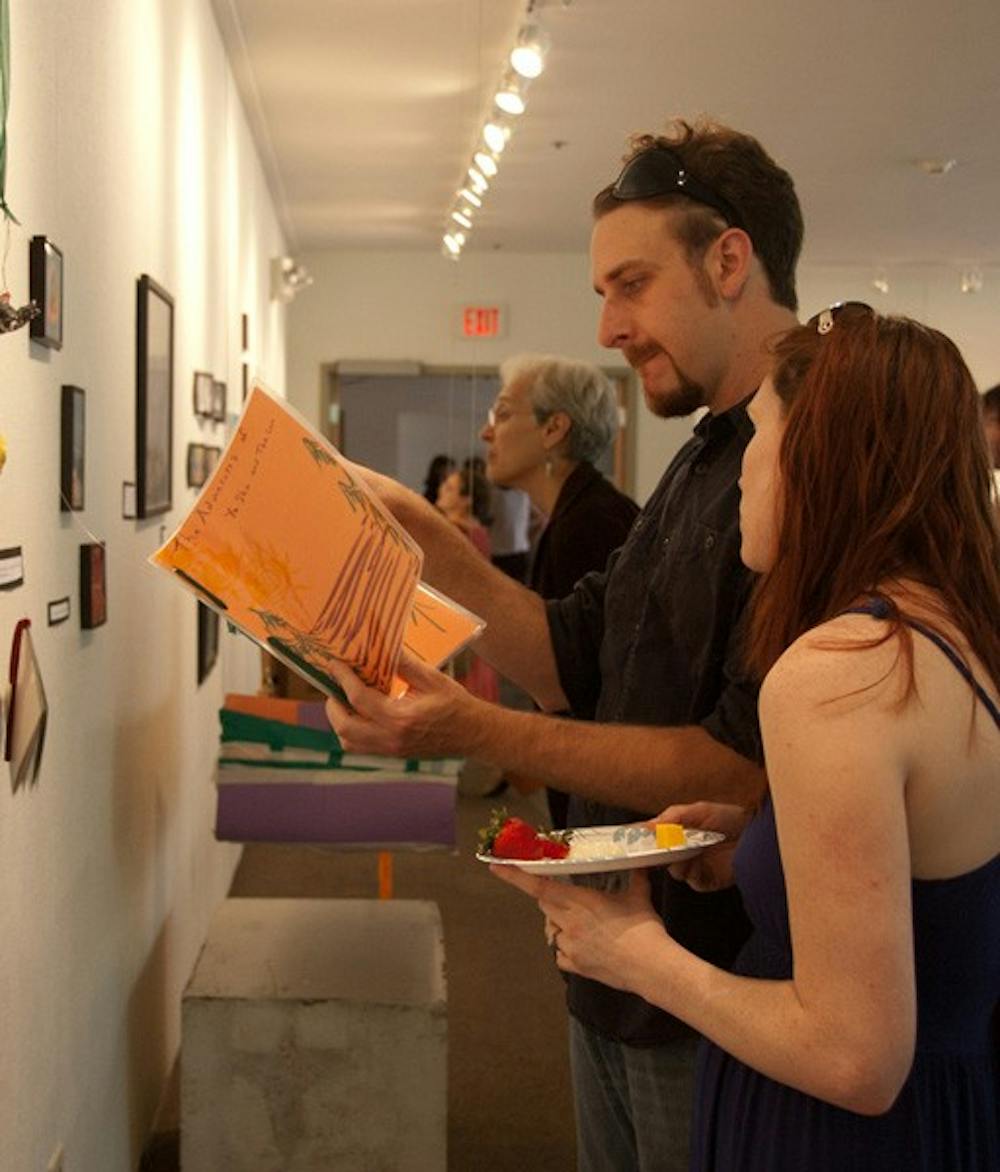The caption beneath “The Karen State” painting, which begins the N.C. Art Therapy Institute’s exhibit in the Student Union Gallery, reads, “This is the story of the people who lived in Burma.”
“But now it’s gone,” continues the artist, E.K.P.S. Wah, a fifth-grader at Frank Porter Graham Elementary School. “It was a great place. But then the people had to run away. Ever since I’ve come to America, I’ve remembered that place.”
“Journeys to a Different Landscape”, which will close today, displays work by refugee students. Most of them are from Myanmar, also known as Burma, but the Refugee Art Therapy Project also includes students from Thailand, the Democratic Republic of Congo and Bhutan.
The art displayed in the exhibit explores different aspects of refugee life and personal experiences from the untrained, but nonetheless profound, hands of elementary- and middle-school-aged children.
One of the most dynamic pieces, made by two other Frank Porter Graham Elementary students, is a cardboard box boat, “The Nightmare Boat,” hanging from the ceiling.
Although the boat embodies the treacherous journey taken by many refugee families, the artists also connected a positive meaning to their project. Evie Runberg, an intern with the institute, described the boy’s creative process.
“It was a way to connect to their culture,” Runberg said. “Their cousins were boat builders, so they thought of them while building it.”
Because most of the children are new arrivals in the U.S., their use of English is limited, so art gives them a way to express themselves.
“Communication is a huge goal,” said Ilene Sperling, clinical director for the institute. “Art is a springboard to express their feelings.”
One piece above all others attracted a lot of attention: a graphic painting of a decapitated man. Below the picture, fifth-grade artist Ta De Htoo explained his frustration with expressing himself.
When he was a baby, the statement reads, his parents feared that if he cried, their location would be revealed and they would be killed.
“But I didn’t cry,” he wrote. “I still don’t cry. I only did once. It was when some people made fun of me for how I speak.”
“I want to tell them, I speak four languages. I want to tell them, when I first got here, I didn’t know how to ask the teachers for anything. Now, I do.”
The institute considers art therapy effective for the refugees as it transcends languages, addresses the children’s post-traumatic stress symptoms and assimilation, and helps them build relationships.
The final piece in the display is a collage called the “Peace Flag.” At Chapel Hill High School’s Newcomer Center, a district-wide English as a Second Language program, students pasted versions of the Burmese flag and images of peace onto a canvas.
Executive Director Kristin Linton led the group therapy session. She said tensions arose among the students working on the flag, since they were of two different ethnic descents with a long history of conflict.
But the disputes were eventually resolved.
“We talked about a past history and the ability to create a new history together,” Linton said.
Contact the Arts Editor at arts.dth@gmail.com.




